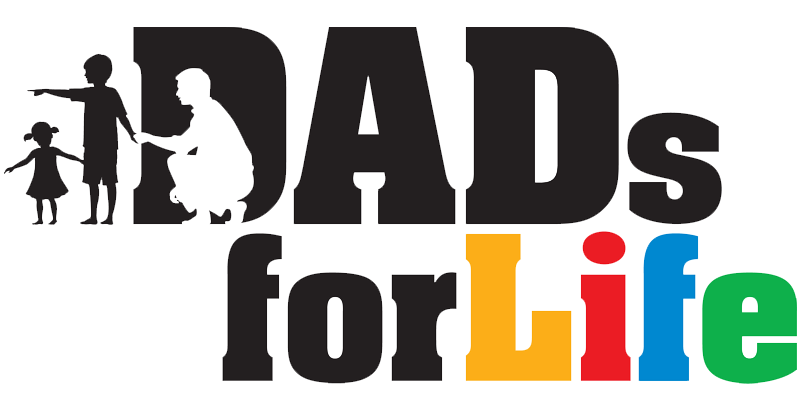Introduction
 Both social service research and practice have historically minimised the importance of fathers. In 1990, researchers reviewing issues of five social science journals published over 27 years found fathers were often portrayed as missing, troubled, and/or perpetrators of maltreatment.
Both social service research and practice have historically minimised the importance of fathers. In 1990, researchers reviewing issues of five social science journals published over 27 years found fathers were often portrayed as missing, troubled, and/or perpetrators of maltreatment.
Father involvement has certainly lagged behind mother involvement within families and in social programmes. But research suggests that a failure to engage fathers effectively in the social services further constrains father involvement.
Why Involve Fathers?
There is growing awareness of the need for social and family interventions to involve fathers more effectively, in line with shifts toward a more family-centred approach to working with children. Some reasons for involving fathers in services and programmes are documented below:
• Research on fathers who have children with special needs shows that his involvement in their treatment not only directly benefits children’s cognitive and emotional development, but also leads to higher levels of personal and parenting satisfaction for both parents, and better maintenance of the child’s treatment.
• Support programmes designed specifically for fathers can increase fathers’ involvement in child rearing activities; improve their communication skills; increase some forms of parent-child interaction; decrease levels of parental stress resulting from the parental role; and improve family functioning.
• A meta-analysis of interventions aiming to enhance positive parental behaviour found that those involving fathers appear to be significantly more effective than interventions focusing on mothers only.
• A failure to involve fathers could lead to fathers feeling incompetent as parents, leading to increased risk of abuse, cognitive deficits and psychopathology for children.
Barriers Faced by Fathers in Social Services
Yet, many programmes focused on children and families include children and their mothers or female caregivers, but not fathers. Barriers to successfully engaging fathers in programmes relate to:
• Fathers themselves, such as their own fears of exposing their inadequacies if they were to seek help, and fathers’ work schedules;
• Family situations, such as fathers not living with mothers and children, mothers’ resistance to involving fathers or “maternal gatekeeping”, and disagreements between fathers and mothers; and
• Inappropriate programme design and delivery, such as a lack of support from staff for father involvement, a lack of male staff to whom fathers can relate, a lack of experience, training, and confidence among staff in understanding how to best work with fathers, and concern that increased funding for providing services to men will drain limited fiscal resources.
The third barrier arising from how staff and practitioners work with fathers is an important one to address. Studies of fathers’ experiences with social services across various settings have found that:
• Fathers are traditionally not as involved in child welfare case planning as mothers. Practitioners’ bias regarding father involvement appears to be the most widely cited barrier in this case.
One study found that caseworkers did not pay as much attention to birth fathers than they did to birth mothers. Also, because caseworkers were likely to assume that fathers were absent, they tended to place the burden on fathers to demonstrate their connection to the child. The mothers’ connection, however, was assumed.
• Another study of the child welfare system found that few workers attempted to involve fathers or even document their lack of participation in the case records, supervisory meetings, or discussions with fathers’ families.
• A review of studies in the U.S. and U.K. focused on young, at-risk fathers found young fathers reporting limited or no contact with midwives, health visitors and social workers. Another study of young fathers, young mothers and service providers found consensus that services are generally targeted at mothers.
Good Practices in Working with Fathers
While developing and delivering father-friendly social services may require more explicit consideration, and additional problems to address, such as the unique barriers that fathers face, efforts to do so have successfully increased father participation.
In the U.S., Early Head Start programmes (aimed at supporting children at-risk from a very young age) that incorporate fatherhood involvement strategies have significantly greater father participation – 77% of fathers participate in programmes with fatherhood initiatives, compared with 27% in standard programmes.
Father-friendly strategies adopted by national Early Head Start programmes include:
• Completing a needs assessment for fathers and developing programme policies with a clear expectation that fathers should and would participate;
• Collecting enrolment information on fathers and including fathers by name on mailed materials;
• Recruiting fathers to work as mentors, recruiters, group facilitators, or coordinators;
• Providing space for the exclusive use of fathers to meet together, listen to guest speakers, or talk with teachers;
• Using multiple recruitment methods to engage fathers -different cultural groups may respond to certain outreach methods over others, so incorporating knowledge about activities and methods to which specific fathers respond would have improved father involvement
• Offering activities at convenient times and locations to accommodate fathers’ schedules
• Educating fathers on the importance of their roles in their children’s development
• Training staff to work with fathers, and providing a toolbox of activities to implement in challenging situations that arise when working with fathers
In the absence of more involved strategies, staff training is cited as the most important step to take in making a programme father-friendly. Training sessions often focus on staff attitudes toward involving men in the programme.
During interviews, many programmes reported that some female staff members had had negative personal experiences with men, which sometimes affected their willingness to engage fathers in the programme. According to staff and programme directors, internal staff training sessions that addressed these personal issues and highlighted the important role that fathers play in their child’s well-being, have helped make female staff more receptive to including men.
Conclusion
Research into the benefits of fatherhood on child development indicates the importance of fathers in children’s lives and also of engaging fathers in social services. By understanding and addressing the factors that influence fathers’ participation, programmes can engage fathers more effectively, raise fathers’ participation, improve service outcomes, and ultimately benefit children.
References:
1. Grief, G., & Bailey, C. (1990, February). Where are the fathers in social work literature? Families in Society: The Journal of Contemporary Human Services 71, 88-92.
2. McBride, B.A., & Rane, T.R. (1996, October). Father/male involvement in early childhood programs. (ERIC Documentation Service No. ED400123) Available online. Urbana, IL: Educational Resources
3. Murray, J. & McDonald, L. (1996). Father involvement in early intervention programs: effectiveness, obstacles and considerations. Developmental Disabilities Bulletin, Vol 24 (2), 46–57.
4. Bakermans-Kraneburg, MJ, Van Ijzendoorn, MH & Juffer, F (2003). Less is more: Meta-analyses of sensitivity and attachment interventions in early childhood. Psychological Bulletin 129, 195-215.
5. McBride, B.A., & Rane, T.R. (1996, October). Father/male involvement in early childhood programs. (ERIC Documentation Service No. ED400123) Available online. Urbana, IL: Educational Resources Information Center, Clearinghouse on Elementary and Early Childhood Education; Murray, J. & McDonald, L. (1996). Father involvement in early intervention programs: effectiveness, obstacles and considerations. Developmental Disabilities Bulletin, Vol 24 (2), 46–57; Head Start Bureau. (2004). Building Blocks for Father Involvement: Building Block 2–First Thoughts on Getting Fathers Involved in Head Start. Available online. Washington, DC: U.S. Department of Health and Human Services.
6. Sonenstien, F., Malm, K., & Billing. A. (2002). Study of fathers’ involvement in permanency planning and child welfare casework [On-line]. Available: aspe.hhs.gov/hsp/CW-dads02; Franck, E. J. (2001). Outreach to birthfathers of children in out-of-home care. Child Welfare, 80(3), 381–399.
7. O’Donnell, J.M. (2001). Paternal involvement in kinship foster care services in one father and multiple father families. Child Welfare, 80, 453-476.
8. Bunting, L., & McAuley, C. (2004). Teenage pregnancy and parenthood: The role of fathers. Child and Family Social Work, 9(3), 295-303.
9. Higginbottom, G., Mathers, N., Marsh, P., Kirkham, M. & Owen, J. (2006). An Exploration of the Teenage Parenting Experiences of Black and Minority Ethnic Young People in England.
10. Head Start Bureau. (2004). Building Blocks for Father Involvement: Building Block 2–First Thoughts on Getting Fathers Involved in Head Start. Available online. Washington, DC: U.S. Department of Health and Human Services.
11. Raikes, H.; Boller, K.; vanKammen, W.; Summers, J.; Raikes, A.; Laible, D.; Wilcox, B.; Ontai, L.; & Christensen, L. (2002). Father involvement in Early Head Start programs: A practitioners study. Princeton, NJ: Mathematica Policy Research; Head Start Bureau. (2004). Building Blocks for Father Involvement: Building Block 2–First Thoughts on Getting Fathers Involved in Head Start. Available online. Washington, DC: U.S. Department of Health and Human Services.
12. Burwick, A. & Bellotti, J. (2005). Creating paths to father involvement: Lessons from Early Head Start (Issue Brief No. 1). Princeton, NJ: Mathematica Policy Research.
About the Author: The Dads for Life Resource Team comprises local content writers and experts, including psychologists, counsellors, educators and social service professionals, dedicated to developing useful resources for dads.
First published on 28-04-2011.
